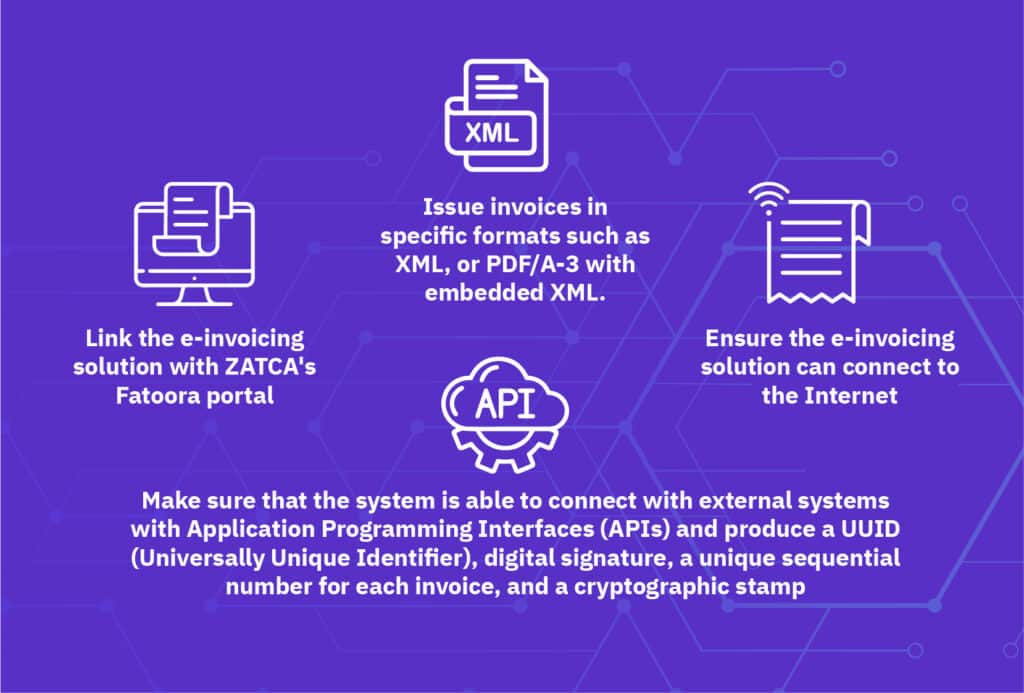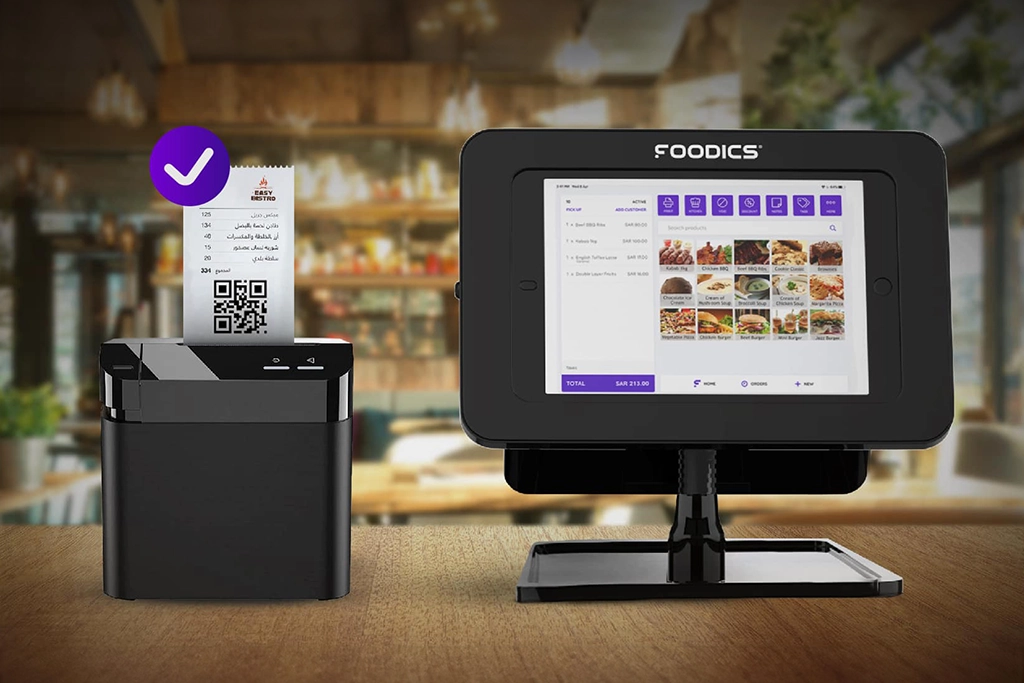With a vision to promote digitalization and ease of doing business in the region, KSA has introduced an e-invoicing system, with the aim to raise the level of consumer protection and reduce hidden economy transactions.
The e-invoicing system process involves an exchange of invoices and credit-debit notes in electronic mode between the buyer and seller. The invoices can be generated, issued, and stored in an electronic format.
According to the rules set by the Zakat, Tax, and Customs Authority (ZATCA), it is mandatory for all F&B businesses currently operating in Saudi Arabia to become e-invoicing-compliant.
The e-invoicing system makes trade more seamless and efficient, leading to faster payments. It would also reduce false transactions due to its inherent transparency, which is critical to bring uniformity and standardization in invoicing processes amongst all businesses.
Progressing towards Phase 2 - The Integration Phase
VAT-registered businesses have already started the implementation for Phase 1 (Generation Phase) based on ZATCA’s regulations starting from December 4, 2021, as e-invoicing has become mandatory for all KSA-based businesses.
Phase 2, also known as the Integration Phase, will be rolled out in waves and will be effective from January 1st, 2023. Phase 2 will involve the introduction of technical and business requirements for electronic invoices and electronic solutions, and the integration of these electronic solutions with ZATCA’s “Fatoora Portal”.
Phase 2’s main requirements by ZATCA:
Link the e-invoicing solution with ZATCA’s Fatoora portal
Issue invoices in specific formats such as XML, or PDF/A-3 with embedded XML.
Ensure the e-invoicing solution can connect to the Internet
Make sure that the system is able to connect with external systems with Application Programming Interfaces (APIs) and produce a UUID (Universally Unique Identifier), digital signature, a unique sequential number for each invoice, and a cryptographic stamp

To comply with phase 2, you need to follow the following steps:
If you only have one branch:
1. Sign in to your Foodics Console
2. Click on Manage
3. Click on Settings
4. Add your business Commercial Registration Number
5. Click on Save Changes

Then, you need to go to Fatoora Portal:
1. Sign in
2. Click on Onboard New Device
3. Choose to generate OTP code(s) for single or multiple EGS Unit(s) by entering the number of OTP codes you would like to be generated
4. The Fatoora Portal generates the OTP code(s) (valid for 1 hour), which will be displayed on the Portal and can be copied or downloaded in a file
5. Enter the OTP code(s) on your own EGS Unit(s) within 1 hour of the OTP code’s generation

If you have several branches:
1. Sign in to your Foodics Console
2. Click on Manage
3. Click on Branch
4. Click on the branch you want to edit
5. Click on Edit Branch on the top right corner
6. Add Commercial Registration Number
7. Click save
8. Repeat the previous steps to add Commercial Registration Number to to each branch you have
Then, you need to go to Fatoora Portal and follow the aforementioned steps to get the OTP code(s).
If you have any questions or concerns please contact our customer support team.
Conclusion
The digital transformation in the Kingdom of Saudi Arabia is moving steadily towards its 2030 goals, and ZATCA regulations are a piece of that bigger picture that will guarantee full business transparency and conformity.
It has become essential for your F&B business to implement an electronic system that is compatible with ZATCA to be fully compliant with its regulations. By adopting Foodics solutions in your restaurant or cafe, your business is not only benefiting from the leading restaurant-tech provider in the MENA region but also gaining peace of mind by becoming automatically compliant with ZATCA’s requirements from day one.



